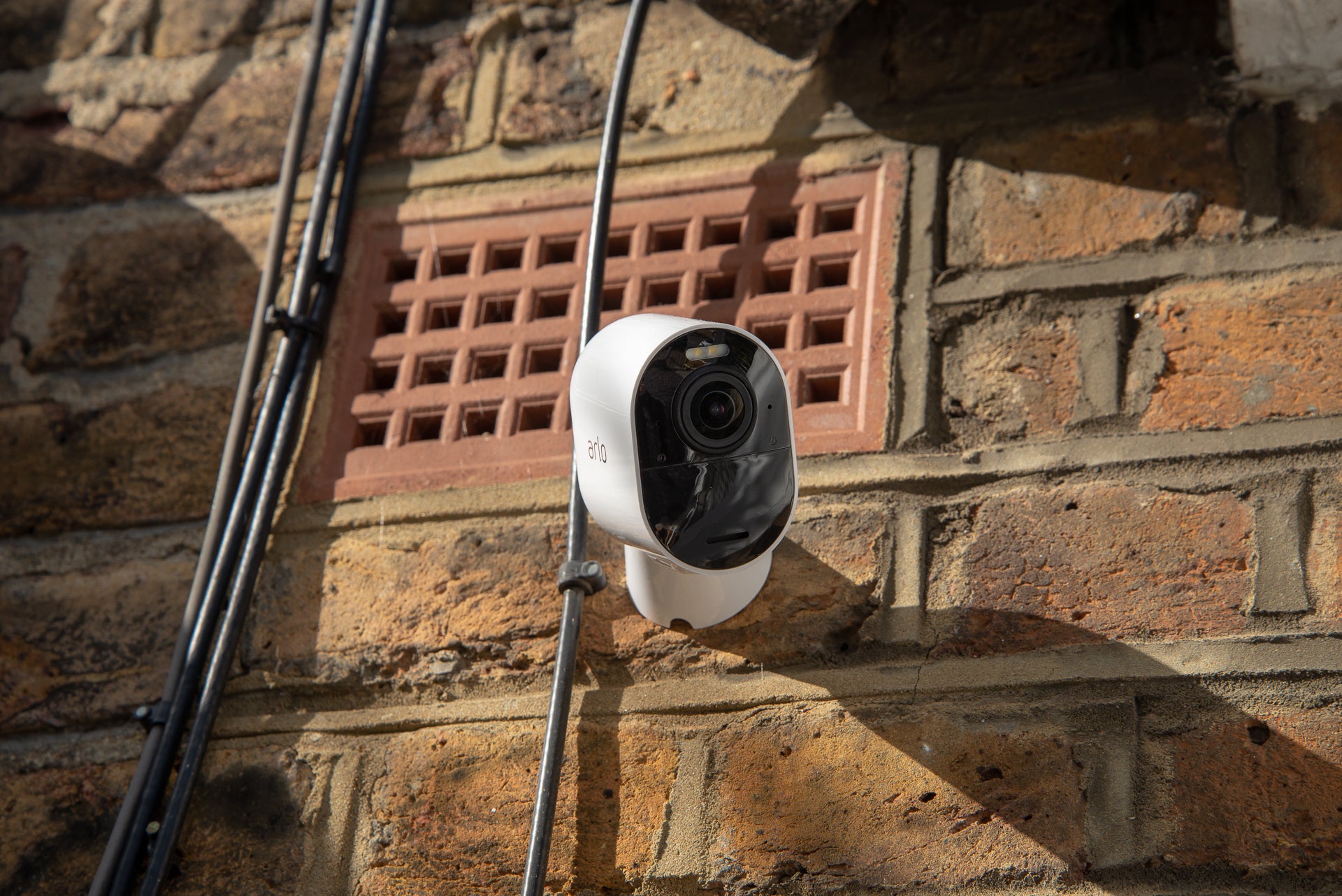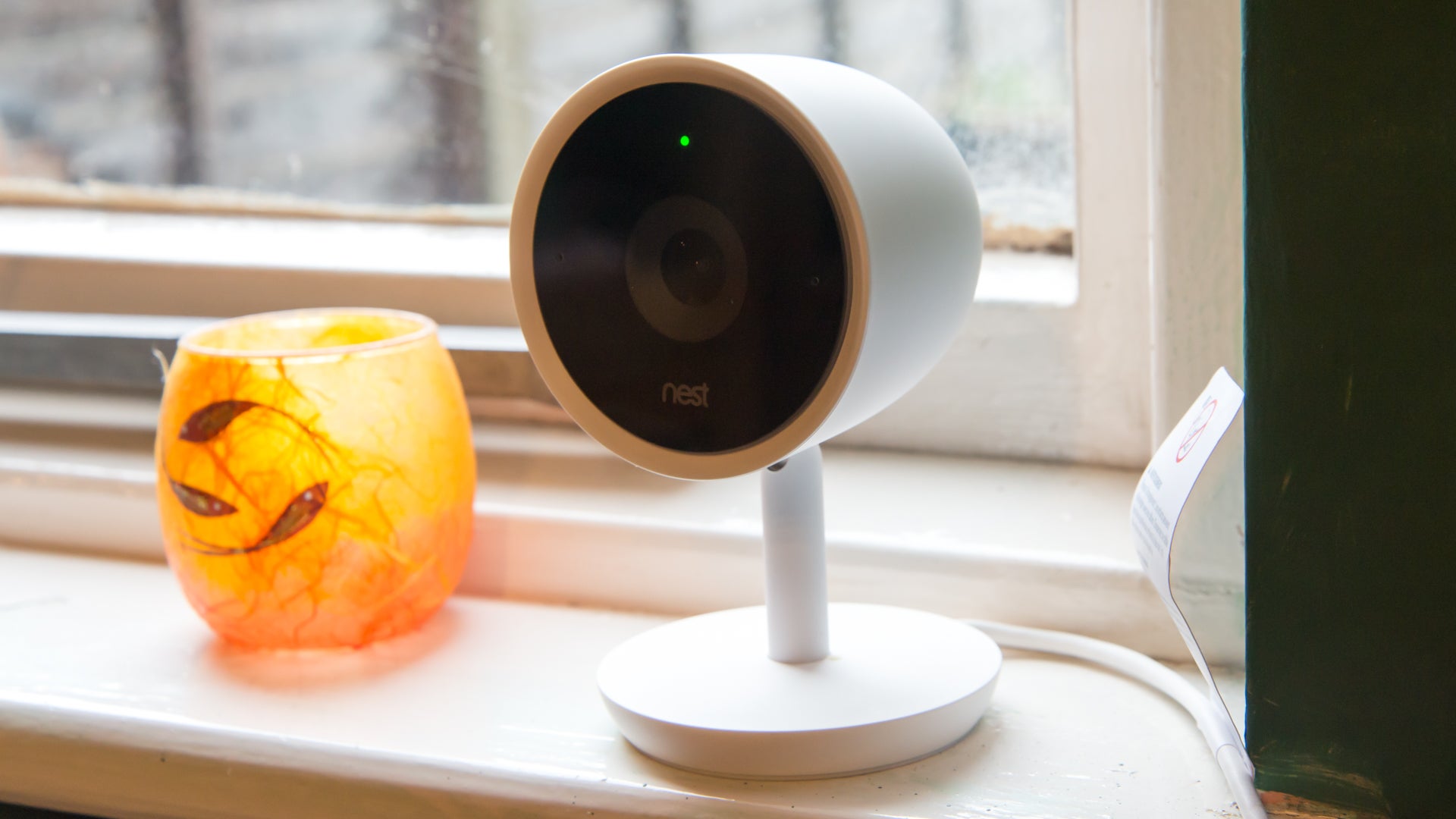Kami Doorbell Camera Review
A budget battery-powered doorbell with some clever features
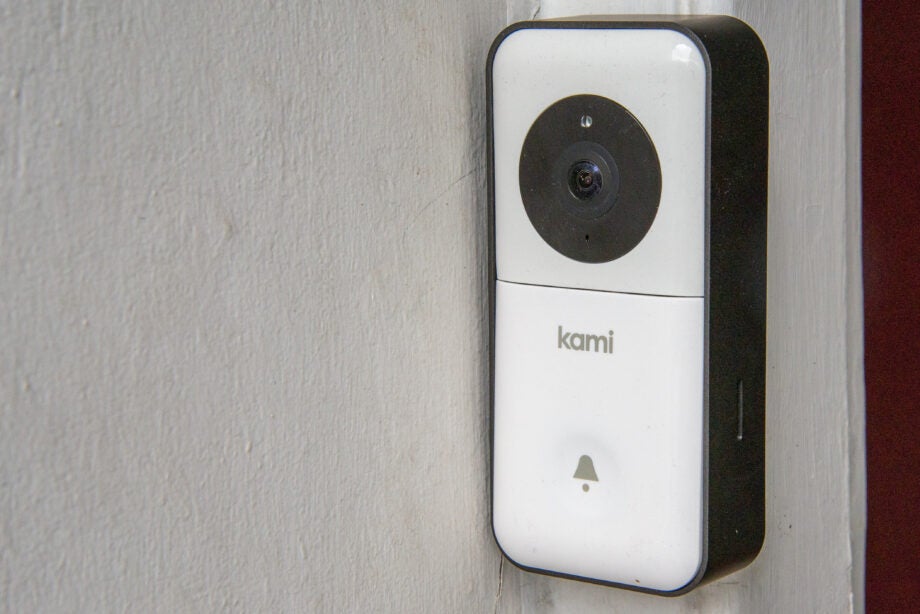
Verdict
Quite cheap for a wireless doorbell, the Kami Doorbell Camera has some neat features including on-board people detection and free six-second clips stored to the cloud – although I could only download low-resolution versions of these. Upgrade to a cloud subscription and you get facial recognition, but this isn’t as polished as Nest’s version. Ultimately, this doorbell isn’t bad, but the competition is better and, in some cases, cheaper too.
Pros
- On-board person detection
- Wired or wireless
- Free six-second clips
Cons
- Needs cloud subscription for main features
- So-so image quality
Availability
- UKRRP: £109.99
- USARRP: $149.99
- EuropeRRP: €134
- Canadaunavailable
- Australiaunavailable
Key Features
- TypeA smart doorbell that can be battery-powered or connected via your existing transformer
- ConnectionThe camera connects to your home network via 2.4GHz or 5GHz Wi-Fi
- Battery lifeBattery life is quoted at up to six months based on four to six detections a month; for somewhere busier, expect the battery to last at least two to three months
Introduction
While the big companies such as Nest (Google) and Ring (Amazon) may have the video doorbell market pretty much sewn up, there’s a growing number of smaller companies making an appearance. Here, I have the Kami Doorbell Camera, a budget battery-powered model with some interesting features, including facial recognition and great video quality.
Slightly clunky software and the need to upgrade to a cloud subscription to access all of the features do hamper the experience slightly.
Design and installation
- Very chunky
- A little basic-looking
- Good range of installation options
It’s usual for doorbells that come with built-in batteries to be more chunky than their wired-only counterparts, but the Kami Doorbell Camera is one of the most portly I’ve seen. At 136 x 64 x 33mm, the Doorbell Camera is pretty huge.
It’s so wide, in fact, that you may struggle to fit it onto your door frame. Fortunately, there are two angle adapters in the box that should be called upon, if you find the doorbell is facing in the wrong direction.
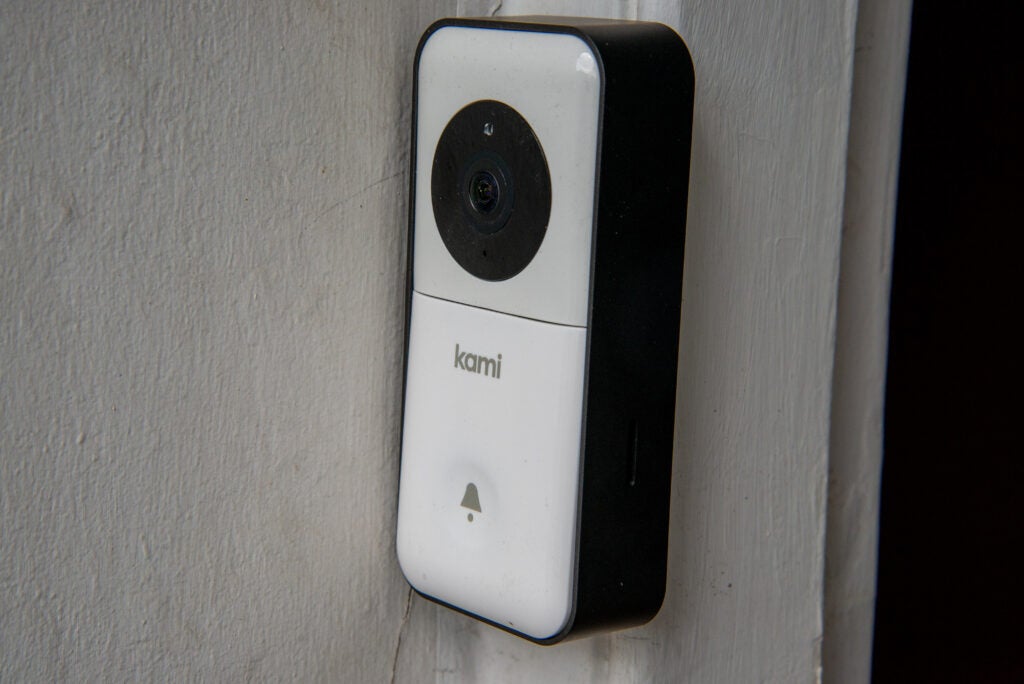
To charge the doorbell, you need to remove it from its mounting plate and use the micro-USB connection on its rear – although you can also take off the front plate, slide out the battery and charge it that way.
There’s also the option to wire the camera into place, using your existing transformer. If you decide to go down this route, you’ll need to follow the instructions carefully, fitting the chime adapt3r so that your internal chime sounds with a doorbell press.
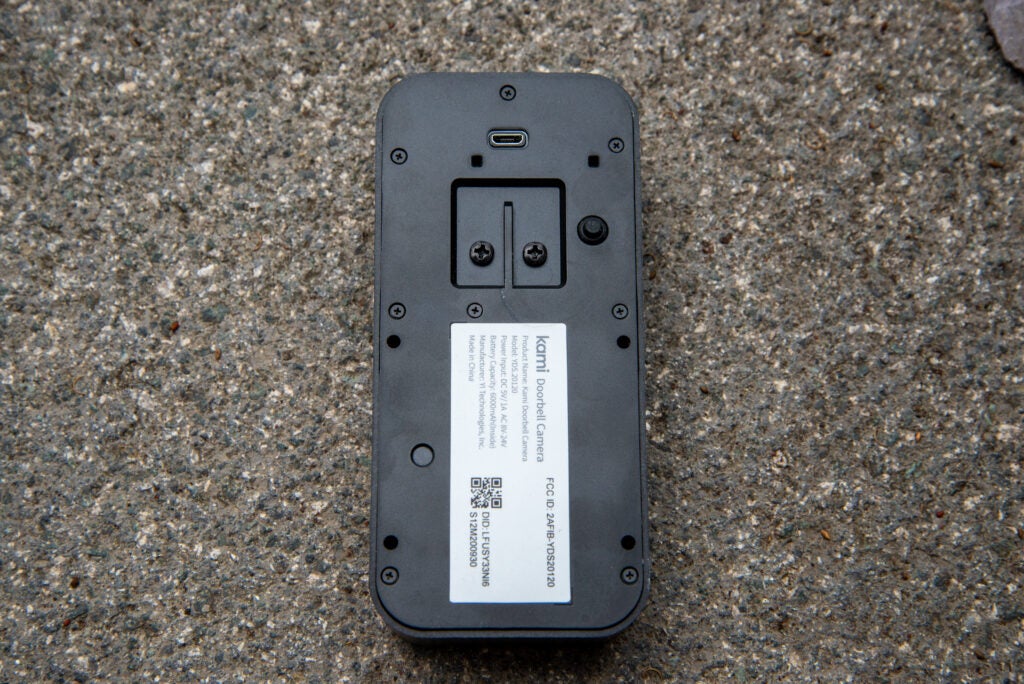
Other than that, installation is straightforward, with the Doorbell Camera connecting to your home Wi-Fi network.
Features
- Facial recognition available
- On-camera person detection
- Amazon Alexa and Google Assistant support
Once connected to your home network, you can start to use the camera. As with other video doorbells, this model uses motion detection (via its PIR sensor) to pick up movement, thereafter alerting you to the motion.
PIR sensors can be rather horrible, going off with any movement, which can result in a barrage of unwanted alerts. Kami does offer a few ways in which you can cut these down. First, you can select the specific areas in which you want the motion sensor active, adjusting the sensitivity. This can cut out swathes of movement, but the settings are as advanced as the activity zones you get on the Ring Video Doorbell 4.
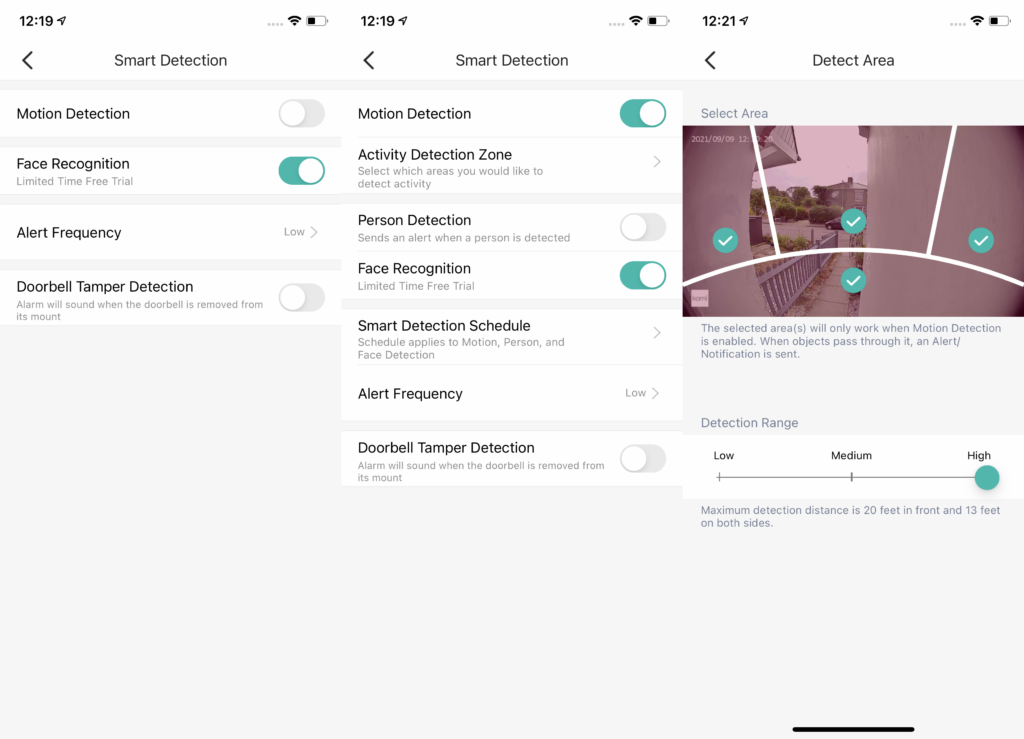
Next, you can schedule when you do and don’t receive alerts, picking key times to be notified, with the messaging silent outside of the specified time. Then, there’s onboard person detection, which proved to be very reliable in my tests; only the Nest Doorbell (battery) goes further, with on-camera person, animal and vehicle detection.
Video is recorded to the cloud automatically and there’s free but limited access included. By default, clips of up to six seconds are saved to the cloud, with a four-minute interval between motion-detected recordings (recordings via a doorbell press are saved regardless).
If you want to have longer recordings without the gap, you’ll have to upgrade to the Kami Cloud. Prices for this start at £3.33 a month for a seven-day history for one camera, rising to £10.83 for five cameras and 30-day history. Discounts apply for yearly subscriptions. Either way, you pay – and, next to Nest and Ring, the cloud subscription is comparatively expensive.
Clips are presented beneath the live view, with both a timeline and a thumbnail view. You can play everything back through the app, or download clips to your phone to preserve them.
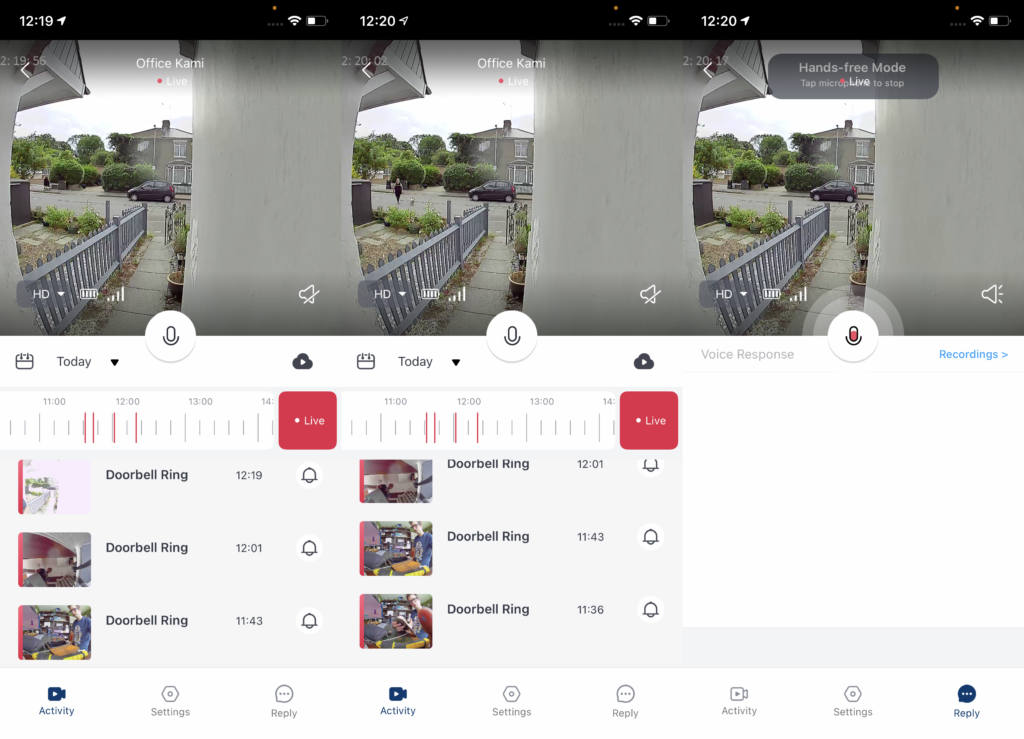
With a cloud subscription, you also get facial recognition. Similar to the feature with the Nest Doorbell (battery), facial recognition lets you save profiles of people at the door, so that the doorbell can alert you when someone you know is there. Performance was a little variable in my tests: when the camera first spotted me, I saved myself in a profile; but when the camera detected me again a few minutes later, it had no idea who I was.
I had to spend a while merging spotted faces into profiles, building up a better picture of what I looked like. Even then, detection was a bit hit and miss. Sometimes the camera would spot me, other times not.
As a standard video doorbell, when someone presses the button, alerts are sent to your phone, so you can answer the call. Two-way talk is pretty good, with clear conversation both ways.
Neatly, you can record your own quick replies that you can play back when someone calls. You could, for example, have replies saying you’ll answer the door soon, or to leave a package behind the bin.
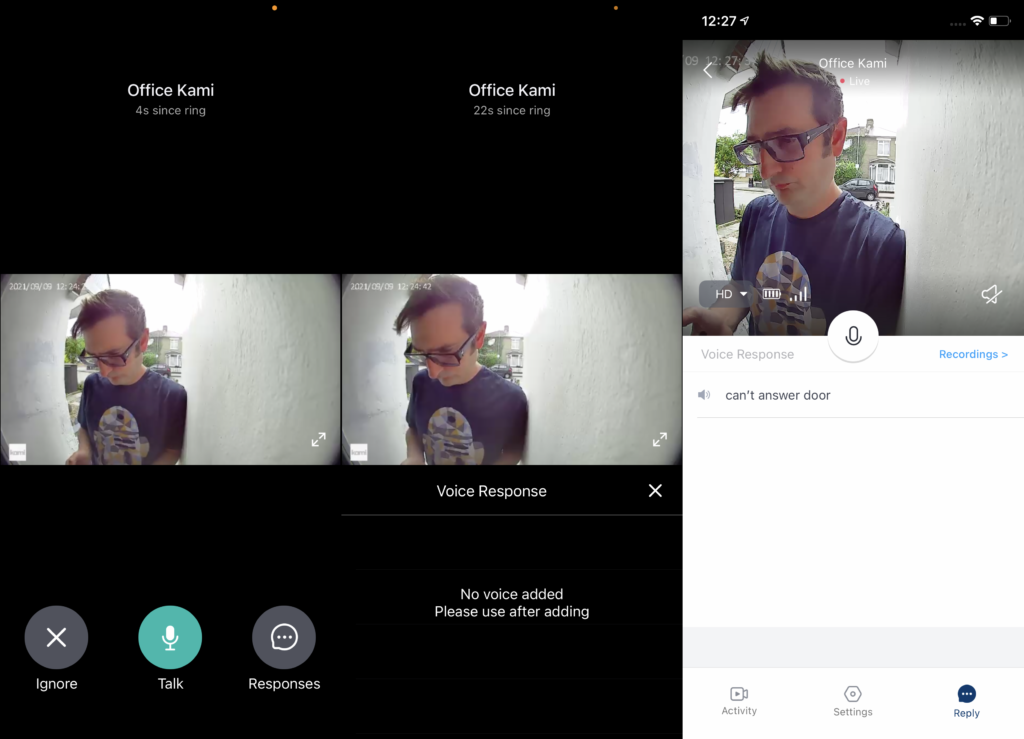
If you have Amazon Echo smart speakers, you can use the Kami skill to link your doorbell, with optional announcements. There’s no option to answer from an Echo Show device, as you can with a Ring Doorbell, although you can view the live stream.
For Google Assistant users, you can view the live stream on a smart display, such as a Nest Hub – but that’s it.
Video quality
- Clear video during the day
- A little over-sharpened
- Night footage is a touch soft
The Kami Doorbell Camera is capable of shooting video at a resolution of 1920 x 1080. With its 195-degree (diagonal) viewing angle, the camera captures a decent amount of your outside.
I noticed that all alerts, when using the free six-second cloud storage, were downloaded in very low resolution (640 x 360), and I couldn’t force them to download at maximum resolution. It would appear as though you need a cloud subscription for that. Video can be recorded manually at full resolution and saved directly to your phone.
Video quality isn’t bad. During the day, the picture was well exposed, although I found it heavily processed and over-sharpened, to the point where objects in the background looked a little like they’d been put through a cartoon filter.
Details in faces were smoothed out at a distance, although you could usually spot who’s who. Close-up, things are better, and you can see who you’re talking to clearly.
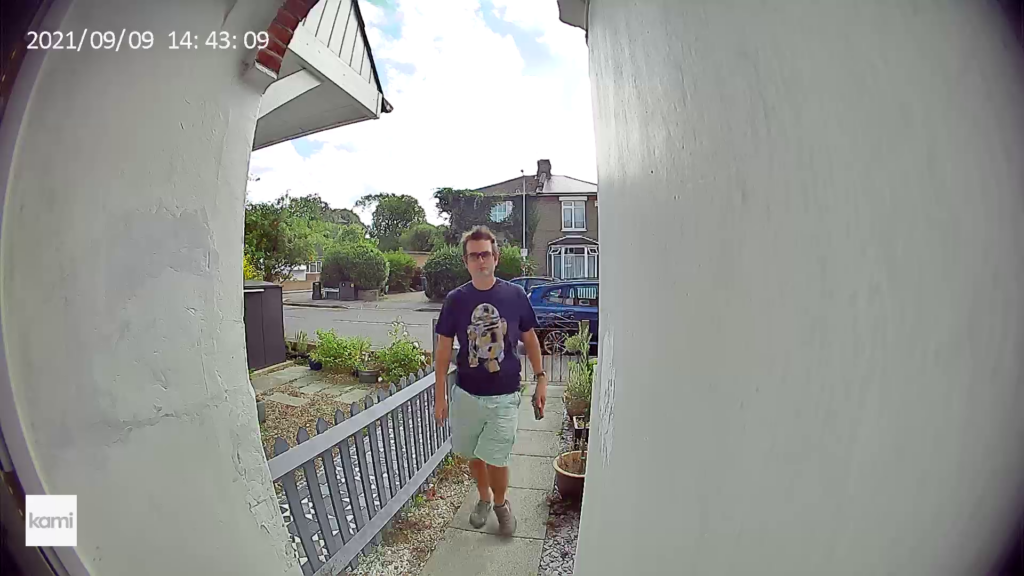
At night, the camera turns on its IR lights to shoot in black-and-white. The heavy processing is still present, but the image becomes much softer. You can see what’s going on, even if you can’t see people’s faces clearly from a distance. Again, people at the door who you’re talking to were clearer.
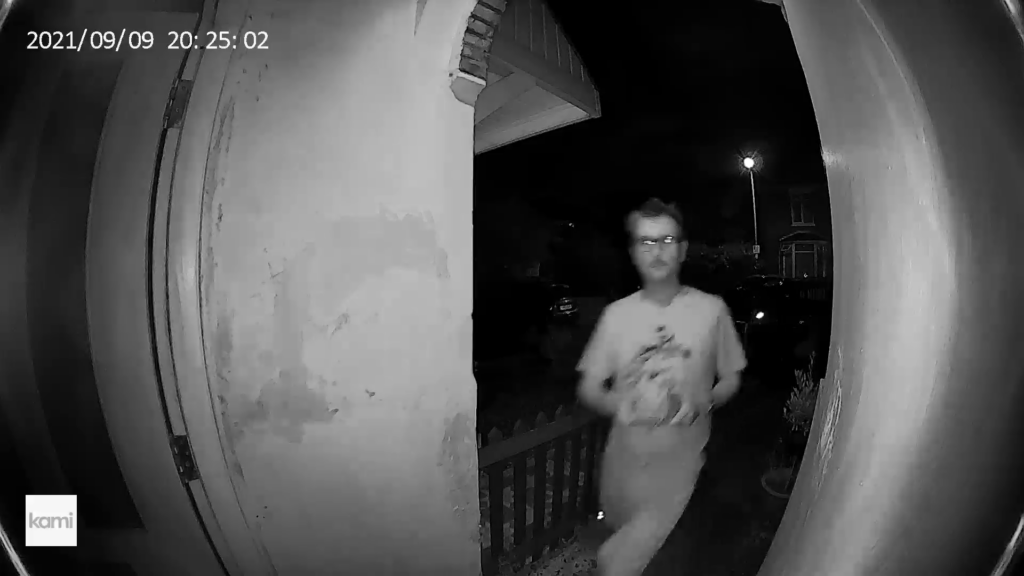
On battery power, the Doorbell Camera can last for up to six months. However, that’s based on a relatively small number of motion detection events. More realistically, based on battery drain, the camera will last two or three months between charges.
Latest deals
Should you buy it?
If you’d rather step away from the bigger names and fancy a well-priced doorbell with some neat features, the Kami Doorbell Camera isn’t bad.
If you want proper Alexa or Google Assistant integration, there are better options available. There are products with cheaper cloud subscriptions, too, and even models that are completely free.
Final thoughts
At just £109.99, the Kami Doorbell Camera is one of the cheaper video doorbells on the market. Having free six-second clips is neat, even if they did download in low resolution for me. The competition is fierce, though. If you want a subscription-free doorbell, then the Eufy Video Doorbell 2K with its SD-card recording is better.
For those willing to pay for a subscription, the basic Ring Video Doorbell is cheaper to buy, offers an improved app and cheaper cloud storage, plus it integrates better with other Ring products and Amazon Alexa.
How we test
Unlike other sites, we test every security camera we review thoroughly over an extended period of time. We use industry standard tests to compare features properly. We’ll always tell you what we find. We never, ever, accept money to review a product.
Find out more about how we test in our ethics policy.
Used as our main security camera for the review period
We test compatibility with the main smart systems (HomeKit, Alexa, Google Assistant, SmartThings, IFTTT and more) to see how easy each camera is to automate.
We take samples during the day and night to see how clear each camera’s video is.
FAQs
It lasts for up to six months, but I found that two to three months was more normal for me.
No, it can record to the cloud only.

